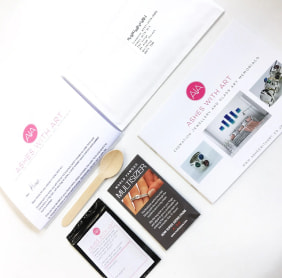How to Create a Memory Box After a Loved One Passes
A memory box is a touching way to memorialise a loved one. It provides a place to keep treasured memories, allowing you to revisit the past when you need a moment to reflect. Creating a memory box can also be an important part of the grieving process, giving you a task to complete that will help you to start sorting through their possessions.
It’s also a helpful way to support children through the grieving process, as it gives them an outlet for their feelings. It also gives them something they can turn to when they want to remember their loved one. Children are more likely to forget those that were in their life when they were very young, but a memory box will provide that essential link.
In this guide, we’re looking at the role of the memory box in the grieving process and how you can turn this task into an emotionally supportive experience.
What is a memory box?
A memory box is a collection of items that remind you of a person, place or pet. In the context of a memorial box, it will typically be items from your life spent together, or a visual document of places visits and experiences shared.
Popular items to include in a memory box include photographs, tickets, letters, notes, cards, diaries, postcards, small trinkets and souvenirs.
A memory box is usually no bigger than a shoe box, but you might choose something larger if you would like to keep much bigger items.
Building a memory box is a cathartic experience for the individual creating the box, as it allows them to revisit the time spent together. Once compiled, it also creates a simple way to revisit precious memories, and this can be helpful in the grieving process.
What are the benefits of a memory box?
Following the death of a loved one, it can be hard to know what to do with their things. You might not want to be surrounded by their possessions, but you aren’t yet ready to let things go. Building a memory box allows you to sort through the items in a logical way.
You might take the most precious memories and put them in the memory box. Remaining items can then be packed away and put in storage. You’ll then be able to return to the memory box and revisit these precious times, without having to dig out all of their items.
A memory box is also more practical when space is at a premium. If you live in a small home and don’t have much storage, you might not have the option to keep all of their things in boxes around your home. By condensing this into a single box of keepsakes, you can save space while still honouring the memory of your loved one.
How to create the perfect memory box
Creating your memory box should be a pleasant and cathartic process that allows you to sort through your possessions. Start by setting aside some time when you won’t be disturbed and make sure you’re in the right mindset.
Building your memory box can be incredibly emotional, so you need to prepare yourself for confronting all of your memories of the individual. If you need to take a break, remove yourself from the situation and try going for a walk.
Start by choosing a safe box to store things in. A sturdy shoe box would be ideal, or you might choose something more substantial to keep the items secure. If you choose a shoe box, be aware that you’ll need to make sure you keep it somewhere dry.
Gather all of the items you’d like to include in the memory box and start sorting through these possessions. Only include things that are attached to fond memories, or things that are important to you.
Remember that it’s entirely up to your interpretation of what is important to you. You don’t have to give in to pressure from anyone else and your memory box can be completely personal to you.
What to include in your memory box
There are some obvious things to include, like photographs from family events or special holidays. Try to be selective about the photographs you include and don’t feel you have to add everything. You can store the rest of your photographs safely away.
Next, look for things with their handwriting on. Handwritten notes carry a lot of emotional significance. Postcards, greetings cards and little notes can help you to feel closer to the individual.
You can then look for special trinkets and souvenirs that you collected from places you visited together. Again, try to focus on the things that bring back the most fond memories. This could include champagne corks from special events, ticket stubs from favourite events, plane tickets from trips and pieces of jewellery collected along the way.
You might also include small items like soft toys that were important to the person. Lots of people have a childhood stuffed animal that is important to them. A small piece of clothing such as a tie or a favourite t-shirt might also be a welcome addition to the memory box.
Building your box alone or asking for help
Building a box alone can be an important part of the grieving process. It can help you to start to work through your feelings by slowly sorting through the physical items in your home. There are also benefits to making this a collaborative process, perhaps tackling the task as a family.
Processing grief and trauma with the help of loved ones can help to make you feel more connected. It’s also helpful to involve children in the process of making a memory box, as they can also contribute handmade crafts to help them to manage their feelings. There are no rules when it comes to memory boxes, and you are free to make it up as you go along. You might find that you only want to keep a few precious items, or your small memory box might grow into a scrapbook of precious mementoes.





